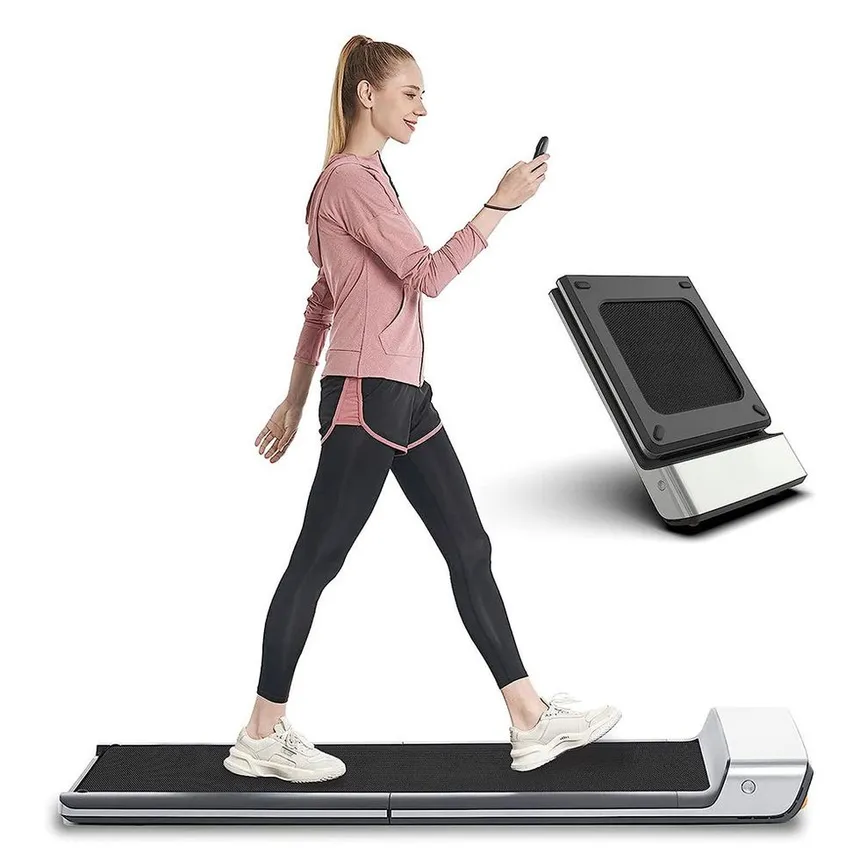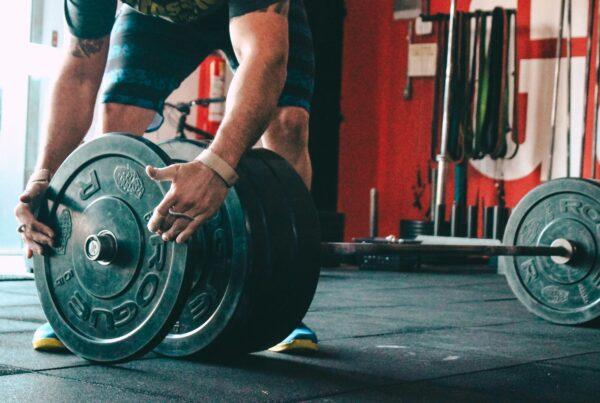Are you considering adding a treadmill to your home gym but worried about limited space? Are Folding treadmills good and do you think they might be the perfect solution for you? These innovative fitness machines offer numerous benefits while addressing the constraints of smaller workout areas. In this article, we will explore the pros and cons of folding treadmills, helping you make an informed decision about whether they are the right fit for your fitness goals.
One of the primary advantages of folding treadmills is their ability to maximize space utilization. They can be easily folded up and stored away when not in use, allowing you to reclaim valuable floor space in your home. This is especially beneficial for individuals living in apartments or houses with limited exercise areas.
In addition to their space-saving capabilities, folding treadmills offer increased portability. Many models feature transport wheels that make it effortless to move the treadmill from one location to another. This versatility allows you to set up your workout area wherever suits you best, whether it’s in front of the TV, by a scenic window, or in a dedicated home gym.
Furthermore, cleaning becomes a breeze with a folding treadmill. Since they can be folded up, you can easily access the space beneath the treadmill to clean the floor or vacuum away any dust or debris that may have accumulated.
However, it’s important to consider the drawbacks of folding treadmills as well. While they offer convenience and space-saving benefits, they may have slightly less stability compared to non-folding treadmills. This can be a deciding factor, particularly if you are an avid runner or engage in high-intensity workouts that require more stability and support.
Now that you have an overview of the advantages and drawbacks of folding treadmills, you can make an informed choice for your fitness journey. Consider your exercise needs, available space, and stability requirements to determine if a folding treadmill is the ideal option for you.
Key Takeaways:
- Folding treadmills are a great choice for individuals with limited space in their home gyms.
- They are easily foldable and can be stored away when not in use.
- Folding treadmills offer increased portability, making it convenient to move them around.
- They allow for easy cleaning underneath, ensuring your workout area remains tidy.
- However, folding treadmills may have slightly less stability compared to non-folding alternatives.
What Is a Folding Treadmill?
A folding treadmill is a convenient fitness equipment that offers flexibility and space-saving benefits. It is designed to be folded up and stored when not in use, making it ideal for those with limited space in their home gyms. These treadmills come in both motorized and manual variations and typically feature transport wheels, allowing for easy mobility within your space.
Key Features to Consider:
- Stability: Folding treadmills offer varying degrees of stability depending on their model and construction. It’s important to choose a treadmill that provides adequate stability during your workouts to ensure safety and comfort.
- Features: When considering folding treadmills, take note of the available features that can enhance your workout experience. This may include built-in workout programs, heart rate monitors, incline options, and more.
- Size: The size of the folding treadmill is another crucial factor to consider. Measure your available space and compare it with the dimensions of the treadmill to ensure it fits seamlessly into your home gym without causing any obstructions.
Whether you’re a beginner or a seasoned fitness enthusiast, a folding treadmill can provide the convenience and functionality you need to achieve your fitness goals.
What Is a Non-Folding Treadmill?
Non-folding treadmills, also known as non-foldable or platform treadmills, are designed to stay in one place and do not fold up for storage. These treadmills are typically more sturdy and stable compared to folding treadmills, making them a better option for running or high-intensity workouts. They often have a larger weight capacity to accommodate heavier users. However, non-folding treadmills are less portable and may take up more space in your home gym.
If you are a serious runner or engage in high-intensity workouts, a non-folding treadmill would be a suitable choice. The sturdy construction and stability of non-folding treadmills provide the necessary support for intense workouts, minimizing the risk of wobbling or instability that could compromise your performance. Additionally, their larger weight capacity ensures that the treadmill can withstand the impact and load generated during vigorous exercises.
While non-folding treadmills excel in terms of stability and weight capacity, it’s important to consider the space available in your home gym. These treadmills, due to their non-foldable design, tend to occupy a fixed spot and may require more room compared to folding treadmills. However, if you have ample space and prioritize durability and stability, a non-folding treadmill is an excellent choice to support your running or high-intensity workout goals.
 Choosing Between a Folding vs Non-Folding Treadmill
Choosing Between a Folding vs Non-Folding Treadmill
When it comes to choosing the right treadmill for your home gym, you’ll likely be faced with the decision between a folding and a non-folding treadmill. This choice will depend on various factors, including the available space, storage options, stability, and desired features. In this section, we’ll explore the key considerations to help you make an informed decision.
Space-Saving Convenience
If you have a small home gym or limited space, a folding treadmill can be a game-changer. The ability to fold and store the treadmill when not in use allows you to reclaim valuable floor space. This makes folding treadmills an excellent choice for apartments or condos where space is at a premium. On the other hand, non-folding treadmills require a dedicated area and do not offer the same level of convenience when it comes to storage.
Stability and Weight Capacity
While folding treadmills provide flexibility in terms of storage, non-folding treadmills excel in stability and weight capacity. Non-folding treadmills are typically designed with heavier frames and more robust construction, offering enhanced stability during intense workouts. Additionally, they often have higher weight capacities, making them suitable for users of all sizes. If stability and weight capacity are paramount to your fitness routine, a non-folding treadmill may be a better choice.
Brands and Reviews
When considering any piece of fitness equipment, it’s important to research and consider reputable brands with positive customer reviews. Look for folding treadmill reviews to gauge the quality and performance of various models. Pay attention to factors such as durability, noise levels, ease of use, and customer support. Additionally, consider the reputation and track record of the brand itself. Opting for a well-established and trusted brand can provide peace of mind and ensure you’re investing in a reliable and long-lasting treadmill.
Additional Features
Both folding and non-folding treadmills come with a range of additional features to enhance your workout experience. From incline settings and pre-programmed workouts to heart rate monitoring and entertainment systems, these features can vary between different models and brands. Consider your specific fitness goals and preferences when evaluating the available features. Some treadmills may offer more advanced features, while others may focus on simplicity and functionality.
| Folding Treadmill | Non-Folding Treadmill | |
|---|---|---|
| Pros |
|
|
| Cons |
|
|
Remember, the most suitable choice between a folding and non-folding treadmill depends on your individual needs and preferences. Assess the available space, consider stability and weight capacity, research reliable brands, and evaluate the features that align with your fitness goals. By making a well-informed decision, you’ll be able to choose the best treadmill for your home gym.
Now that you have a better understanding of the factors to consider when choosing between a folding and non-folding treadmill, you can confidently select the right option for your home gym. Whether you prioritize space-saving convenience or stability during intense workouts, there are excellent options available in both categories. Remember to read folding treadmill reviews, explore the best folding treadmill brands, and compare the features and specifications that matter most to you. Happy treadmill shopping!
Conclusion : Are Folding Treadmills Good?
When it comes to choosing between a folding treadmill and a non-folding treadmill, the decision ultimately boils down to your personal preferences and specific needs. If you have limited space in your home gym and value convenience, then a folding treadmill is the ideal option for you. These treadmills can be easily folded up and stored away when not in use, allowing you to maximize space and maintain a clutter-free environment.
On the other hand, if stability and durability are your top priorities, a non-folding treadmill may be the better choice. Non-folding treadmills are known for their sturdy construction, providing a stable platform for running and high-intensity workouts. They often have a higher weight capacity, making them suitable for users of all sizes.
When making your decision, it’s important to consider other factors such as space availability, portability, stability, additional features, and price range. Take the time to research and compare different brands and models, reading reviews and considering the specific needs of your fitness goals and home gym requirements. By doing so, you’ll be able to find the best folding or non-folding treadmill that aligns with your needs and assists you in achieving your fitness goals.


 Choosing Between a Folding vs Non-Folding Treadmill
Choosing Between a Folding vs Non-Folding Treadmill





